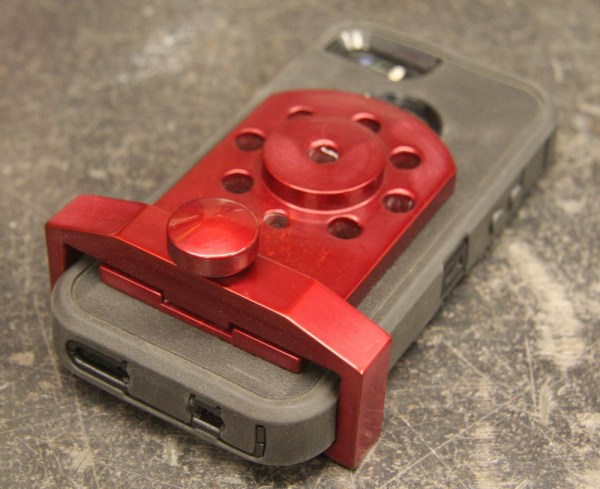There’s a slew of apps out there for tracking your bike rides. If you want to monitor your ride while using the app, you’ll need it securely affixed to your bike. That’s where [Gord]’s No Dropped Calls build comes in. This aluminium mount was hand milled and anodized, which gives it a professional finish.
The mount consists of 3 parts which were machined out of stock 6061 aluminium. The plans were dreamt up in [Gord]’s head, and not drawn out, but the build log gives a good summary of the process. By milling away all of the unnecessary material, the weight of the mount was minimized.
Once the aluminium parts were finished, they were anodized. Anodization is a process that accelerates the oxidization of aluminum, creating a protective layer of aluminium oxide. [Greg] does this with a bucket of sulphuric acid and a power supply. Once the anodization is complete, the part is dyed for coloring. If you’re interested, [Gord] has a detailed writeup on home anodization.
The final product looks great, puts the phone within reach while biking, and prevents phone damage due to “dropped calls.”



 Making a ring on a lathe is a relatively simple ordeal, but the two larger rings [Patrick] made (one was for a friend) featured some interesting patterns that aren’t easy to make without a good CNC setup. Luckily, this friend has
Making a ring on a lathe is a relatively simple ordeal, but the two larger rings [Patrick] made (one was for a friend) featured some interesting patterns that aren’t easy to make without a good CNC setup. Luckily, this friend has 








